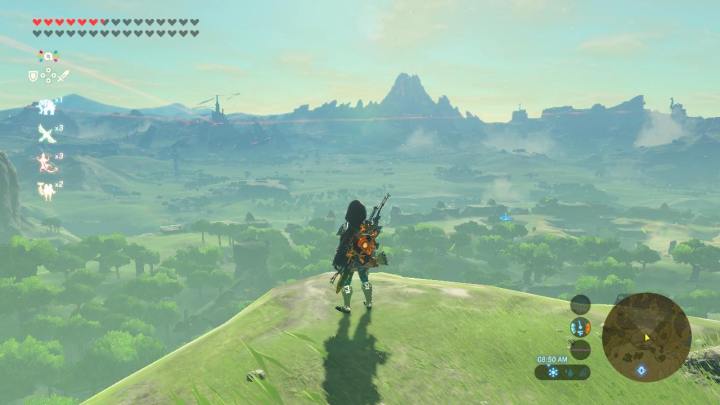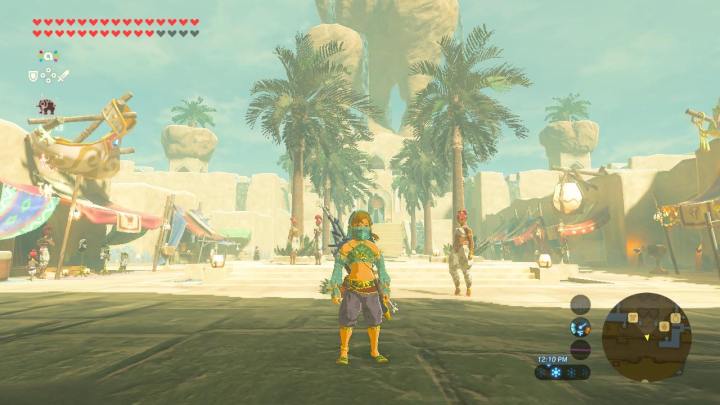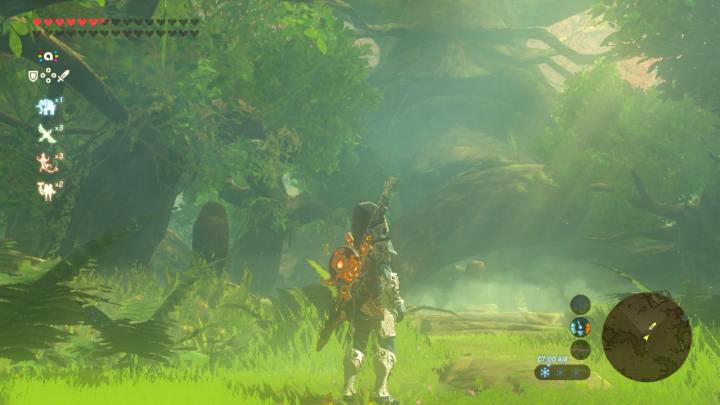The Legend of Zelda: Tears of the Kingdom is an enormous sequel that builds on Breath of the Wild’s sturdy foundation. I mean that quite literally, as the adventure takes place on the same Hyrule map as its predecessor. That fact gained a mixed reaction from fans prior to its release, with some questioning if Tears of the Kingdom would feel like a new game or a very expensive piece of DLC.
Thankfully, the former is true. Despite reusing Breath of the Wild’s map, the sequel does include lots of new areas to explore in the form of the Sky Islands and a massive underground world. But the surface world isn’t exactly the same either. While old locations return, a lot has changed due to ruins raining down from the sky as well as gloom corrupting the land. Not only are there visual changes, but the people and races of Hyrule are all dealing with it in very different ways.
To get a sense of how similar — and, in some cases, radically different — Hyrule is in the sequel, I’ve pulled together comparisons of seven classic locations as they appear in both Breath of the Wild (on the left) and Tears of the Kingdom (on the right). That should give you a better sense of what’s changed in Hyrule following Calamity Ganon’s defeat, though there are plenty of surprises to find in the sequel.
The Shrine of Resurrection
Breath of the Wild begins with Link waking up mostly naked in the Shrine of Resurrection before running outside to see a gorgeous view of the Hyrule landscape. You can return to that site on the Great Plateau in Tears of the Kingdom, but you’ll find that quite a bit has changed. In addition to the layout around the iconic opening cliff changing, the Shrine of Resurrection is gone entirely. You can still stand on that iconic opening cliff and get a similar glimpse of Hyrule though. You’ll just notice some floating islands and adjusted cliff sides when you do.
Kakariko Village
Out of every location in the game (save for the floating Hyrule castle), Kakariko Village was most radically changed between games. That’s because the arrival of the Sky Islands dumped several ring-like ruins into the town. When you visit Kakariko Village this time around, you’ll find that new wooden pathways surround the village that take researchers up to the ruins. It’s a fun little twist that creates the sense that life has radically changed for the people of the small town.
Zora’s Domain
If Kakariko Village is the most different spot in the sequel, Zora’s Domain has undergone the least amount of change. It looks fairly identical in Tears of the Kingdom, with the same grand fish structure overlooking a twisting series of walkways. The only notable difference I’ve found from exploring is that a shrine that used to be inside of it isn’t there anymore and its central statue, depicting a Zora champion, has changed to show a new hero. Otherwise, the Zora kingdom is nearly identical, making it the most unaffected by the appearance of gloom (though the Zora storyline reveals that the race is dealing with some water issues as a result).
Gerudo Town
Gerudo Town sees a particularly interesting change in the sequel. At first glance, they look identical. All of the trees and stalls are just about exactly where you remember them. But look closely at the screenshots and you’ll notice a big difference: No one is milling the streets in the Tears of the Kingdom version. There’s a specific story reason for that, as the Gerudo people have gone into a bit of hiding in the sequel. That creates an intriguing dynamic as Link gets to see how the race has adapted to life in a sort of fallout shelter within the ghost town. And the good news is that Link no longer has to sneak through the town gates by disguising himself as a Gerudo.
The Lost Woods
The Lost Woods returns in Breath of the Wild and looks about the same, but only after solving some new secrets within it. For one, there’s an entirely new method of navigating to the center of the woods that’ll leave Breath of the Wild players scratching their heads. Once you get there, you’ll find that the poisonous gloom has had a particularly bad effect on the Korok’s home. You’ll need to find the source of the problem before snapping the Deku Tree out of an eerie trance.
Eventide Island
For me, Eventide Island is the most memorable location in Breath of the Wild. It’s a deserted island that acts as a massive shrine after Link gets stranded on it. That has entirely changed in the sequel, as Link can now safely navigate to it to complete a different quest line. You can get a quick tease of what that might be in the screenshot comparisons here, as the island is now overrun with monsters that have turned it into a base of operations. There’s still a big secret hiding on Eventide Island though, still making it one of the sequel’s best locations.
Hyrule Castle
At the center of Hyrule lies its massive castle, which plays a major role in both games. Though as you can tell, there have been some major changes to the castle and the area around it. In Breath of the Wild, the field around Hyrule Castle was perilous. It was filled with poison and Guardians that would try to kill Link the second he stepped foot on land. That’s entirely different in Tears of the Kingdom, as a thriving town has been built in that space. It’s now a safe spot for Link to survey the castle and even buy some gear. Oh, and I should probably mention that Hyrule Castle is also floating in the sky now, right? You’ll find out why soon enough.
The Legend of Zelda: Tears of the Kingdom is available now on Nintendo Switch.

















